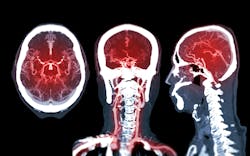New study finds a 67% increase in neurovascular imaging use for headache and dizziness in the emergency department
New research demonstrates that the use of CT angiography (CTA) for patients with headache or dizziness increased dramatically over 5 years in the emergency department (ED) of a large medical center.
Simultaneously the rate of positive findings on those same exams decreased. The study, published in the journal Internal and Emergency Medicine, raises concerns about whether the 67% increase in CTA from 2017 to 2021 reflects necessary and appropriate care.
The study was conducted by researchers at Medically Engineered Solutions in Healthcare Incubator, Innovation in Operations Research Center (MESH IO) at Massachusetts General Brigham in collaboration with the Harvey L. Neiman Health Policy Institute. ED admissions for headache and/or dizziness, and associated CTA exams, were examined in data from a level 1 trauma center that evaluates approximately 110,000 ED patients each year.
The researchers found that CTA rates for headache and dizziness increased from 7.89% of ED visits in 2017 to 13.24% in 2021; a 67.4% increase over these five years. On average, a given patient with headache and/or dizziness was 15% more likely to have a CTA in 2021 vs 2017. To glean whether the increased use was driven by greater severity in ED patients, the researchers also evaluated the rate of positive findings on these CTAs. They found that over the same period, the rate of positive findings dropped by 38%.
“Although the total number of CTA exams increased from 422 in 2017 to 662 in 2021, the number of patients with an abnormality detected actually dropped slightly from 71 to 69, accounting for the lower positivity rate,” said Dr. Marc Succi, co-senior author, emergency radiologist, and Executive Director of the MESH Incubator. “This finding suggests the increasing trend does not reflect increasing need, and that hospitals should take steps to ensure that imaging is appropriately used.”
Co-Senior Author, Dr. Karen Buch a neuroradiologist at Massachusetts General Hospital shared concerns about observed disparities in the data: “Unfortunately, our results also revealed potential biases in the use of CTA for certain patient groups. Specifically, patients with private insurance were more likely to have a CTA, whereas the likelihood of a CTA was less for Black compared to White patients.”
Harvey L. Neiman Health Policy Institute release on Newswise




